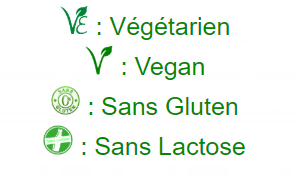from
Behind the French Menu
by
Bryan G. Newman
behindthefrenchmenu@gmail.com
The Mouton Barèges -Gavarnie AOC
The Mouton Barèges-Gavarnie AOP; the sheep are something very special. This mutton is on only French restaurant menus from June through January. Practically none of their meat is exported, so when Barèges-Gavarnie is on the menu, do not let the opportunity pass you by.
Le Lac d'Aumar
www.flickr.com/photos/grand-tourmalet/14992824740/
Mutton, you may say, is meat from old sheep that no longer supplies milk and is only good for sausages. Now is the time to change your mind. The menu may offer a roast from a doubloon, an 18-month to two-year-old castrated male, that is considered the best of the breed. Another menu may offer a winter stew prepared from a two-year-old ewe. There are excellent lambs in France, but mutton has a different taste and texture, and the Mouton Barèges-Gavarnie sheep have red, marbled, tender meat.
To begin with, these are a unique breed, they are hardy and their summer pastures where they graze in complete freedom day and night at an altitude of between 1,600 meters ( 5,250 feet) and 2,600 meters (8,300 feet) high. The temperatures change from below freezing at night to 90ºF ( 32ºC) during the day, so they need their special wool.
Until you have tasted this mutton, you will never be able to understand how very different this is to lamb. It is not a replacement for lamb; you cannot compare them. They are very different meats with different tastes and textures.
The Official Logo of The Mouton Barèges -Gavarnie AOP.
Mouton Barèges-Gavarnie on the menu:
Brochette de Mouton Barèges Gavarnie à la Réglisse, Choux Vert et Châtaigne des Pyrénées – Skewers of the Barèges-Gavarnie mutton flavored with licorice served with cabbage and chestnuts from the Pyrenees.
Côtelettes de Mouton AOC Barèges-Gavarnie à la Crème de Serpolet - Chops from the Barèges Gavarnie mutton flavored with a cream of wild thyme sauce.
Gigot de Mouton Barèges-Gavarnie et Haricots Tarbais - Roasted leg of the Mouton Barèges-Gavernie served with the Label Rouge, red label dried beans from Tarbes in the Pyrenees.
Gigot de Mouton Barèges-Gavarnie
Navarin de Mouton Baréges-Gavarnie Printanier Navarin - A stew of Baréges-Gavarnie mutton cut into regular shapes, along with vegetables, nearly always including turnips. The navette, a turnip, is considered the source of the name navarin, a turnip stew. A Navarin becomes a Navarin Printanier, a springtime stew when it is made with lamb and young spring turnips along with other early vegetables.
Civet de Mouton AOC Barèges-Gavarnie – A slowly cooked stew from the Barèges-Gavarnie mutton. A stew like this will be prepared with vegetables and red wine. Civet were traditional stews associated with small wild game; that meant a lapin, a rabbit, or a lièvre, a hare, and occasionally a marcassin, a young wild boar. Now the term civet is used for many other stews like this menu listing.
The Mouton Barèges-Gavarnie sheep are brought to their mountain pastures in the area called the Pays Toy, in the department of the Hautes-Pyrénées, in the late spring.
Heading for higher pastures
In the high pastures, these sheep have total freedom; not even a shepherd to watch out for them except maybe once every ten days. Nevertheless, since writing this, I have been told that the tradition of permanent shepherds and sheepdogs is returning, as the wild animal protection laws have seen the local bear population increasing. By November, the sheep are back in a covered shelter in the valleys and feed on hay that comes from their summer pastures.
There is, of course, a fete for the Mouton Barèges-Gavarnie, but the date and place move every year within the region. Check ahead with the Tourist Information Office website below. This is not just a fete where the children can pet the sheep; this is also a chance to taste and enjoy, and then everyone can enjoy sheepdog trials and competitions.
For the fete and touring in the region in summer or winter, see the English language website:
The same website has information on the highest spa in France, where the Barèges waters, a constant 42 °C (107.6 °F), are known for their help with bone reconstruction, rheumatism, and respiratory system. The spa has been known since the beginning of the 17th century and is the highest in the Pyrenees. The ski resort of Barèges is one of the largest skiing centers in the region of the Midi-Pyrénées.
Cross-country skiing with the family
www.flickr.com/photos/grand-tourmalet/7008047935/
The English language website of Gavarnie Tourist Information office:
Connected Posts:
Searching for the meaning of words, names or phrases
on
French menus?
Just add the word, words, or phrase that you are searching for to the words "Behind the French Menu" and search with Google. Behind the French Menu’s links include hundreds of words, names, and phrases that are seen on French menus. There are over 400 articles that include over 3,000 French dishes with English translations and explanations.
Behind the French Menu
by
Bryan G. Newman
behindthefrenchmenu@gmail.com
Copyright 2010, 2012, 2015, 2016, 2018, 2024.














